Composition and description of the drug Diammophos, rules for use in the garden
Mineral additives are used exclusively for the rapid and productive growth of cultivated plants. Diammophos is considered a perfect example complex fertilizersrich in important nutrients: nitrogen and phosphorus. Fertilizer is environmentally friendly, helps to accelerate the flowering process, fruit setting, and has a positive effect on their taste characteristics.
Description of the drug
The drug appeared on sale a long time ago, however, it did not gain much popularity among gardeners due to the great competition from more promoted analogues.
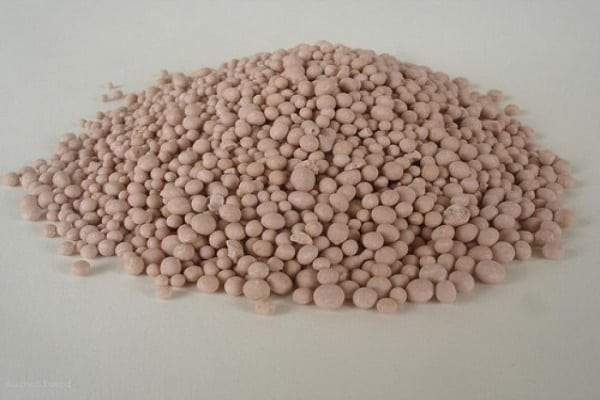
What it is?
In appearance, Diammophos is small granules of white, gray, yellowish or pink tones, which include three important macronutrients: nitrogen, phosphorus, potassium.
Diammophos belongs to complex preparations of a wide range of applications. It is suitable for most garden crops and is successfully used on any type of soil.
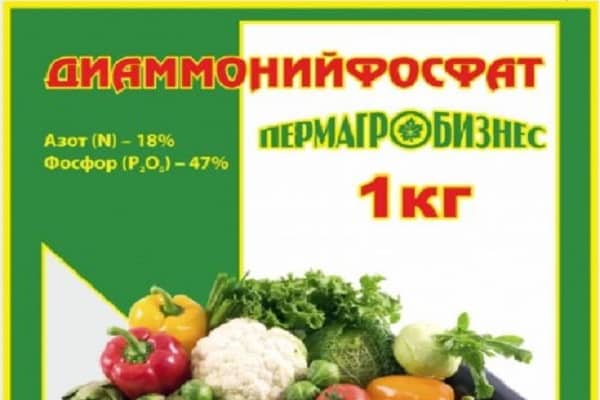
Characteristic
Diammonium phosphate is obtained by the method of complex chemical transformations, in which phosphoric acid is neutralized with ammonia. In this way, water-soluble grayish (less often pink, yellowish, white) salt is obtained in the form of small granules (up to 0.5 mm). It has excellent flowability (up to 100%) and a melting point of +155 ºC.
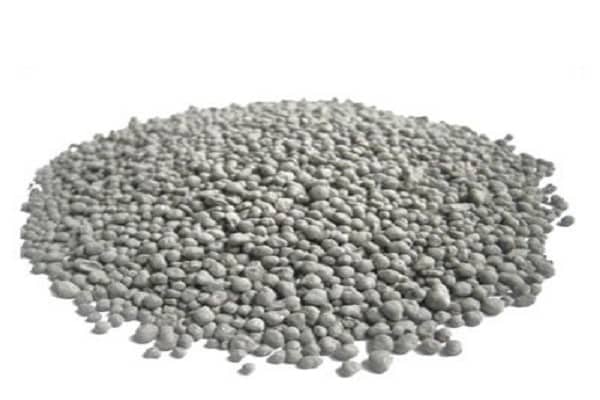
Composition
Fertilizer includes three essential macronutrients: phosphorus, potassium, nitrogen. The last element is less, because the drug is often referred to as phosphorus-containing dressings.
When fertilizing the soil with diammonium phosphate, it should be borne in mind that the composition still contains trace elements: magnesium, sulfur, iron, calcium, zinc. The percentage of the latter is approximately the same. Therefore, the use of this preparation covers the needs of cultivated plants in the main macro- and microelements; additional mineral dressings are not required.
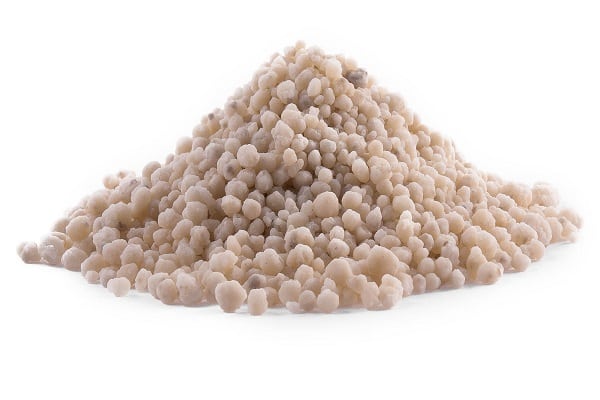
Benefit
Often Diammophos is used as an independent feeding, less often as part of other complexes:
- The presence of the main macronutrients in the preparation guarantees a comprehensive effect on cultivated plants. The latter grow well, become more resistant to diseases and attacks from pests.
- Fruits accumulate sugar more easily, become juicier and tastier.
- Garden crops become resistant to temperature fluctuations, prolonged heat, and prolonged rains.
- The accumulation of harmful substances in the crop does not occur.
- The drug is non-toxic, which guarantees the ecological purity of the grown products.
- It goes well with organic fertilizers: bird droppings, rotted manure, compost.
- Retains in the ground, is resistant to washout. Provides plants with nutrients at all stages of growth and development.

Application of ammonium hydrogen phosphate for plants
The use of Diammophos is justified for all types of cultivated plants that do not tolerate chlorine well. Vegetables, berry bushes, greens are very responsive to fertilization.
The drug is used both for the treatment of large areas (in the fields) and for growing cultivated plants in small garden plots.
The best results are obtained by Diammophos on nitrogen-rich lands. Or in combination with organic feeding. This is especially true in regions with prolonged rains. Thanks to the competent combination of organic matter and minerals, there is no leaching of useful elements from the soil. Therefore, plants grow well without experiencing nutritional deficiencies.
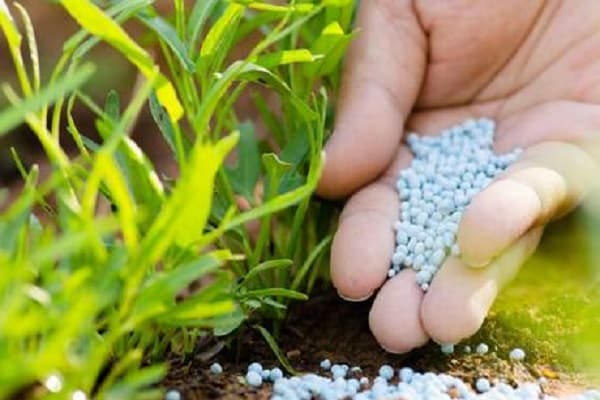
Diammophos helps to increase the yield of all crops. The quality of the crop and the germination of the grown seeds are improved. Along with this, the immunity of plants is increased, due to which they more easily resist adverse environmental factors.
Agriculture
Diammophos is recommended to be applied in the spring or autumn. After the snow melts, the preparation is evenly scattered over the area until the plants are planted. The optimal dosage of fertilization is a large spoon per meter. This is usually done before the spring digging. In the absence of precipitation, watering is recommended so that the active substances dissolve and give all the nutrition to the soil. In addition, watering is also recommended in order to prevent burns of the root system of the seedlings.
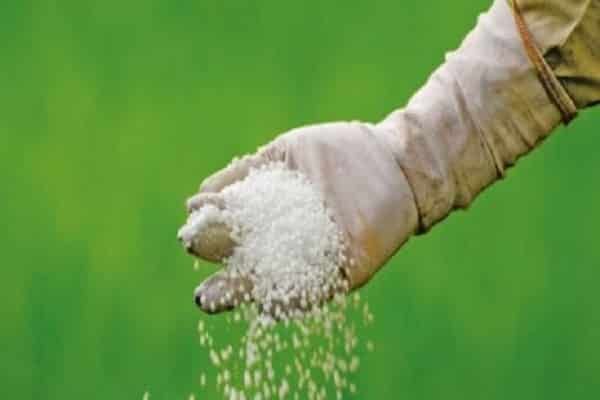
The drug reanimates weak, diseased trees and shrubs that grow slowly and experience a sharp deficiency of nutrients.
Berry crops are especially responsive to its introduction: gooseberries, raspberries and currants. A couple of large spoons per square meter are enough. m. The same dosage is applicable for vegetable crops.
Indoor plants and garden flowers are also fertilized with Diammophos. Thanks to intensive nutrition, they grow faster and set buds.

Industry
Ammonium hydrogen phosphate is found not only in agriculture. They are also used for industrial purposes:
- As a food additive for livestock (in the form of preservative E-342). The limiting dosage of this substance is 70 mg per 1000 g of body weight per day. The preservative is approved for use in most developed countries of the world.
In addition, they are used in the manufacture of dairy products, bakery products, canned meat and fish, refreshing drinks, dietary supplements. The drug regulates the acidity level of food, improves the properties of food.
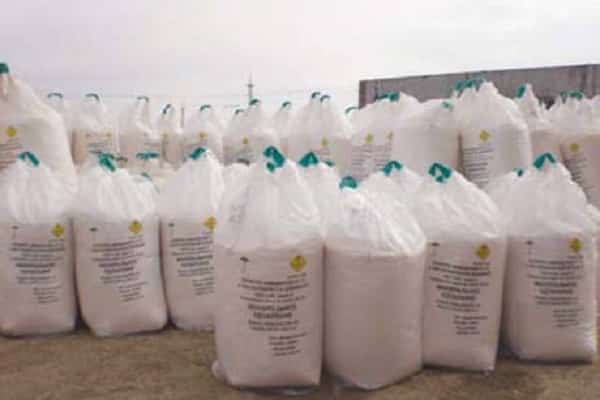
- Food diammonium phosphate acts as a means of obtaining alloys of certain metals. Among them are zinc and bronze, copper and tin.
- The drug is used to treat some materials that are sensitive to high temperatures. Possesses fire-retardant qualities, it is used in the production of textiles, paper products.
- In the pharmaceutical industry in order to prevent caking, lumps.
- In the technical field, in particular, in the production of devices using the characteristics of ferroelectric, piezoelectric.

Application on various types of soils
Diammophos is quite suitable for any type of soil. In arid regions, the drug is applied deeper, and in areas with abundant and frequent rains, it is scattered over the surface.The greatest effect from the use of the drug is noted on the lands rich in nitrogen: peatlands, fallow or old arable.
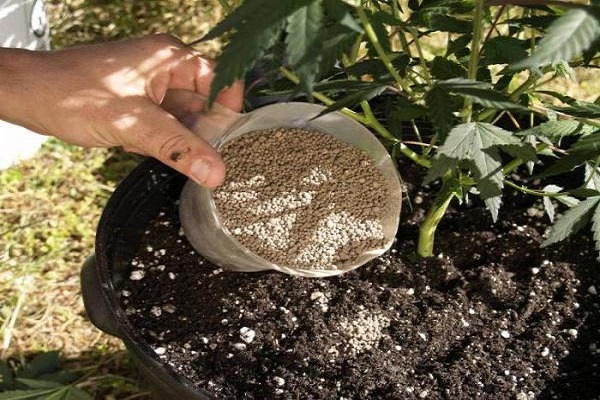
Light soils and fallow fields when irrigated
In this case, Diammophos is used exclusively after a competent and accurate calculation of the dosage. If you exceed the application amount, there will be a loss of nitrate nitrogen. In some cases, this loss reaches 20%.
Ammonium hydrogen phosphate is introduced into the soil in order to enrich it with useful elements. This is especially true in the spring before the main sowing work on the site. The drug is also used for feeding plants in the phase of active growth. It is one of the few chemicals allowed to be combined with irrigation.
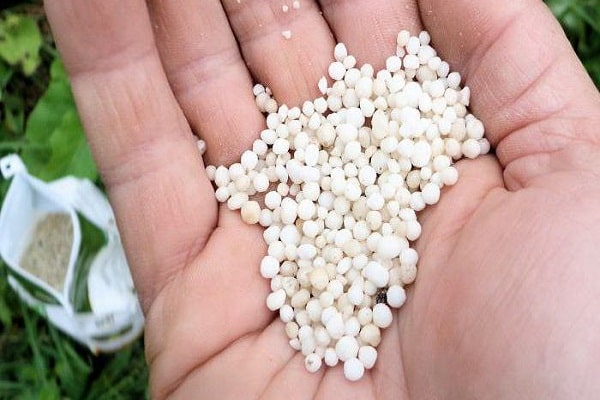
Behavior in soil
Diammophos, getting into the ground, decomposes into ions. Dibasic ammonium phosphate and Ammophos - for ammonium ions NH4+ and phosphoric acid: H2PO4-, HPO42- and PO43-.

Potassium compounds
Potassium compounds included in the active composition of the drug decompose in the soil into a positively charged potassium ion, sulfo group or phosphate ion. It all depends on the compound used to introduce K.
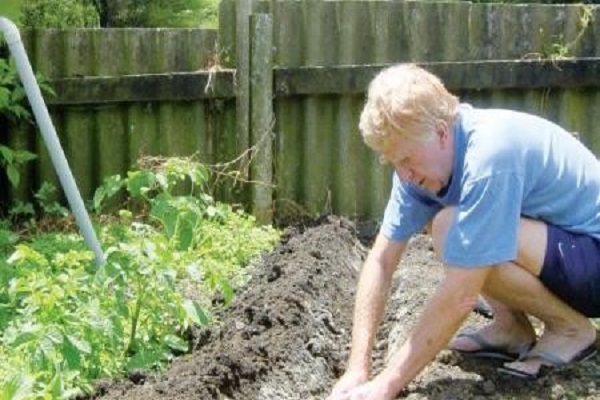
Ammonium ion
It is known that this ion in soils of any type (the exception is lungs, which have a low absorption capacity) are rapidly absorbed by the soil, losing its former mobility. In the off-season, this property allows you to keep nitrogen in the ground. After winter in about 6 weeks, due to the transformation during nitrification, nitrate nitrogen forms are formed.
Nitrates are completely absorbed by garden crops and soil microflora. A small amount of nitrogen is lost during leaching.
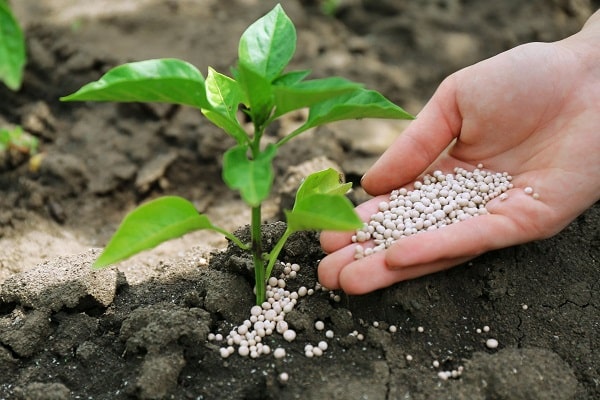
Phosphoric acid ions
They are able to be absorbed by garden crops, but with varying degrees of effectiveness. So, H2PO4 is able to be assimilated easier, faster than others, HPO42- is much narrower, and PO43- is not absorbed by plants at all.
All ions not assimilated by crops form stable soil compounds over time. This happens either through exchange absorption or by chemical bonding. Phosphorus of the exchange type is more accessible to garden crops.

Potassium compounds
They are characterized by low mobility along the soil profile (exceptions to the rules are sandstone and sandstone).
The potassium ion exhibits an extreme degree of activity, coming into contact with AUC in two main types of absorption at once.
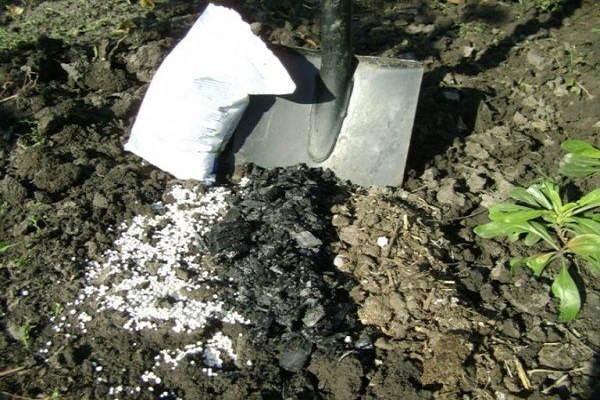
Exchange absorption
This process concerns potassium. It is reversible, insignificant, and is not susceptible to washing out from the layer of arable land. Therefore, it is more available for assimilation by plants.
The reverse process favors the displacement of K from the PPK, and the isolation of rhizomes of garden crops also helps. This will lead to acidification of the soil solution, which is especially important for acidic soil, where aluminum and hydrogen are not observed in the composition of the PPK.
If used for a long time for potassium-loving plants, the soil will slightly acidify.
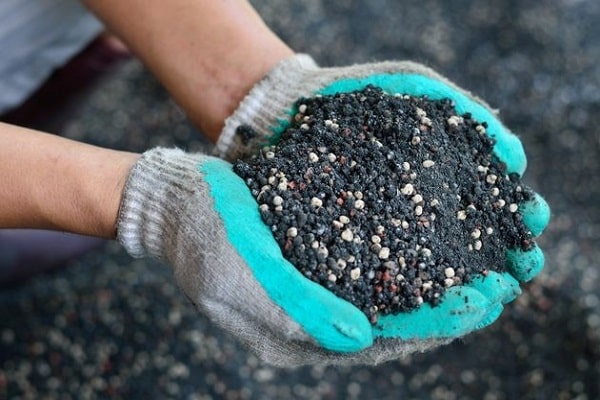
Non-exchangeable potassium
Almost devoid of mobility, plants are unable to assimilate. Such potassium is fixed in clay-containing soil minerals. The fixation level reaches 82% and is in direct proportion to the size of the feed particles.
So, large-crystalline forms, as well as granules, are less in contact with the soil, and therefore reduce the level of potassium fixation.
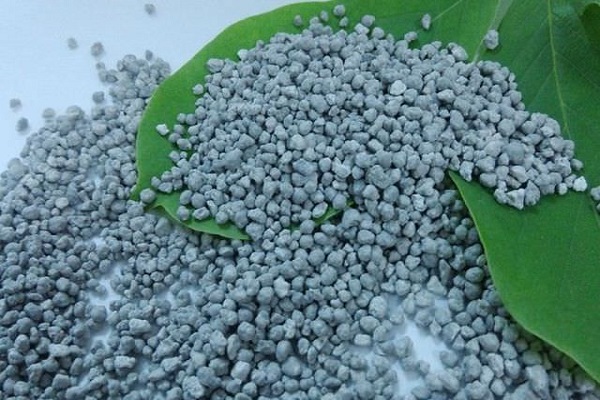
Application on various types of soils
When using Diammophos on your site, do not forget about the type of soil and the level of fertility. The drug contains more phosphorus than nitrogen. On soils deficient in the last macronutrient, it should be used only in combination with other fertilizers. For example, organic.
In general, Diammophos is considered a universal mineral fertilizer capable of improving the qualitative composition of almost any type of soil.
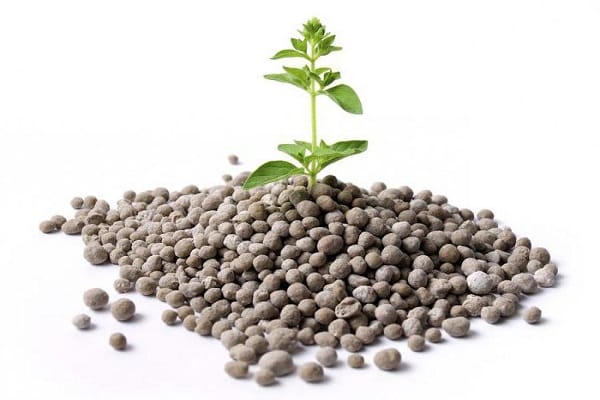
Diammophos application rates per 1 m2
When using the drug, follow the dosages indicated on the package.
Application rates are usually universal for all soil types:
- In the spring, before digging the site - 25 g per sq. m.
- For fruit trees, the age of which is from 2 years, 20 is enough. Fertilizer is usually sprinkled on the near-trunk circle, slightly embedding the granules in the soil and spilling thoroughly.
- For planting strawberries, up to 7 g of fertilizer is applied per meter of the garden.
- For potatoes - 8 g per sq. m.
- For greenhouse plants - 35 g per sq. m.
In the absence of precipitation, the area sprinkled with Diammophos must be watered abundantly.

What to do in case of overdose
Diammophosphate allows plants to grow rapidly, bloom together and bear fruit abundantly. However, in its application, observe the measure.
An overdose of the drug negatively affects the taste of garden crops, changes their color to an atypical one, negatively affects the volume and duration of storage of the crop.
In case of excessive application of Diammophos, planting of vegetable and fruit crops is not recommended. Better to let the soil rest for 1–2 years. Some gardeners use this time for planting green manure and complex soil improvement.
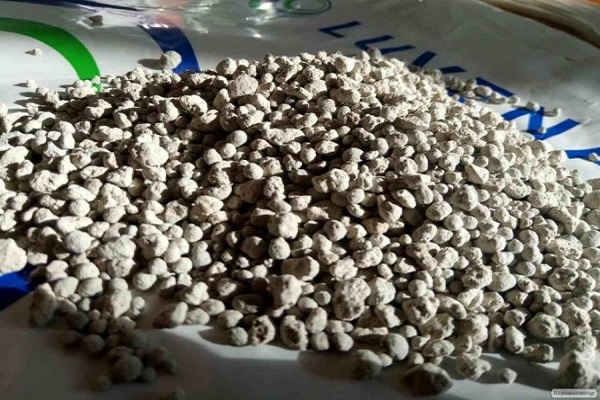
Application methods
The gardeners usually apply the drug in different ways. Among the main methods, the following are distinguished:
- Root dressing. Diammophos is preliminarily diluted in water and plants are fertilized with this composition.
- Before digging by scattering over the site. This fertilization method is one of the most common because of its simplicity and efficiency.
- Foliar application. Some horticultural crops prefer summer foliar dressing over traditional root dressing. Knowing this trick, gardeners manage to get a bountiful harvest.
Diammophos is applied at all vegetation periods of plants. In addition, this substance is successfully used for greenhouses.

Terms of use for different crops
The use of ammonium hydrogen phosphate has its own subtleties and nuances that must be taken into account when growing each specific crop.
Rice
Diammophos is actively used in the cultivation of this moisture-loving culture. The drug is resistant to leaching, and therefore perfectly copes with its main task - it nourishes the plant with the necessary useful components.
In addition, it allows rice to gain strength, acquire rich green mass, and increase yields. The drug prevents the accumulation of nitrates. Rice grown on Diammophos is absolutely safe for health.

Grapes
This plant is distinguished by its fastidiousness and sensitivity not only to growing conditions, but also to nutrition. However, Diammophos grapes are great, because the culture loves phosphorus. And not every analog contains so much of this macronutrient.
If you combine the drug with organic fertilizers, the grapes will grow better, bear fruit and more easily respond to changing weather conditions. The application rate is indicated on the packaging, often it is determined by the age of the crop.
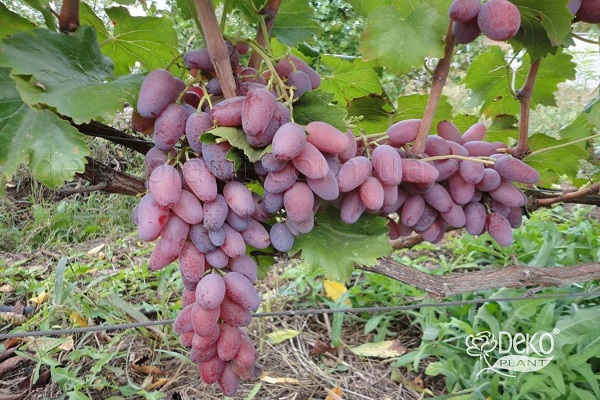
Potatoes
It is known that Diammophos is versatile, however, some root crops are especially fond of it. This applies to potatoes, which begin to sprout together, grow and bear fruit confidently. Its structure and taste are improved, and shelf life is increased.
Diammonium phosphate is usually applied to the soil in the spring before plowing. The dosage is 25 kg per hundred square meters. Some gardeners put fertilizer into the holes (6 g each) directly at planting.
Another way to fertilize potatoes is to sprinkle the area plowed under the potatoes just before planting. The powder is embedded in the soil during harrowing. The consumption of the drug is 20 g per sq. m.
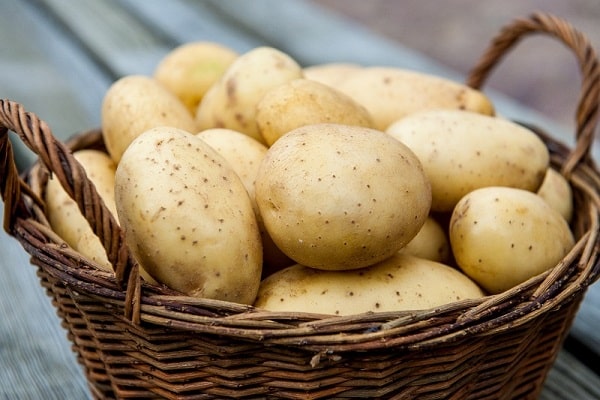
Cabbage
It is known that plants of the cruciferous family do not tolerate chlorine. The latter is often part of potash dressings. Diammophos, in this respect, is one of the most successful fertilizers for cabbage.It promotes the rapid setting of forks, protects against pests and diseases by positively affecting the immunity of vegetable crops:
- in the spring, when digging a site, it is recommended to apply up to 35 g of fertilizer per sq. m;
- directly into the wells when planting - 4 g per root;
- in the autumn processing of a plot for planting cabbage - 40 g per sq. m.
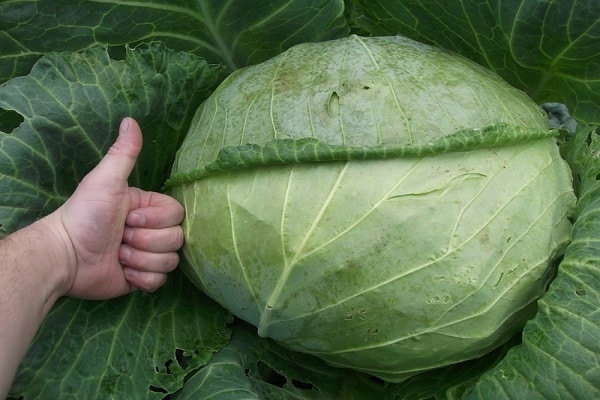
Tomatoes
Tomatoes are grown almost everywhere in Russia. They are planted both in greenhouses and in open ground. For tomatoes, a complete feeding with minerals is important, since the plant spends a lot of strength and energy not only on growth, but also on the ovary. The use of Diammophos has a great effect on the yield of tomatoes. So, nitrogen nourishes, promotes rapid growth, potassium improves the structure of fruits and their taste, phosphorus - contributes to the development of a powerful root system, which is responsible for the delivery of nutrients.
Application dosages:
- in the spring before digging an open area - 25 g per sq. m, closed (greenhouses) - 55 g per sq. m;
- directly into the wells when planting plants: 4 g per meter (open ground), 6 g per meter (closed ground).
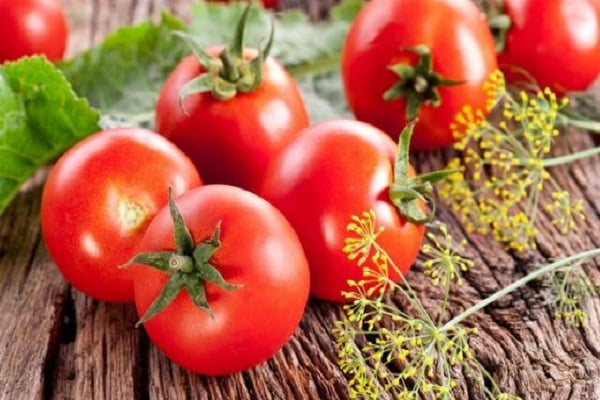
Strawberry
This plant has a great need for minerals, through which it is possible to obtain a large and rich harvest.
Diammophos is a successful feeding for strawberries, due to the presence of the main macro- and microelements necessary for a crop for normal growth and fruiting. In addition, the drug prevents the accumulation of harmful substances in berries, which is extremely important for health.
Top dressing is used in diluted form and by spreading (application rate - up to 20 g per sq. M).
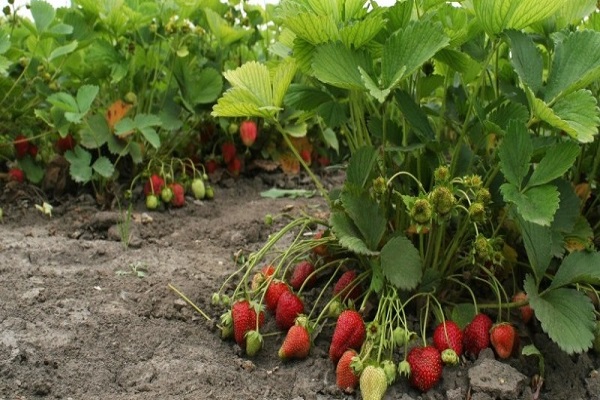
Lawn
Green carpet requires constant mineral feed to build up a succulent mass. Especially after the winter season and seasonal haircuts. They are fed in several stages.
In the spring, it is preferable to place saltpeter (3500 g per hundred square meters) with subsequent watering, in summer - the use of Diammophos (4000 g per hundred square meters).
In autumn, it is better to use diammonium phosphate, but at a lower dosage (2500 g per hundred square meters). The drug will help the lawn to prepare for the rest period, it is better to endure the winter cold.
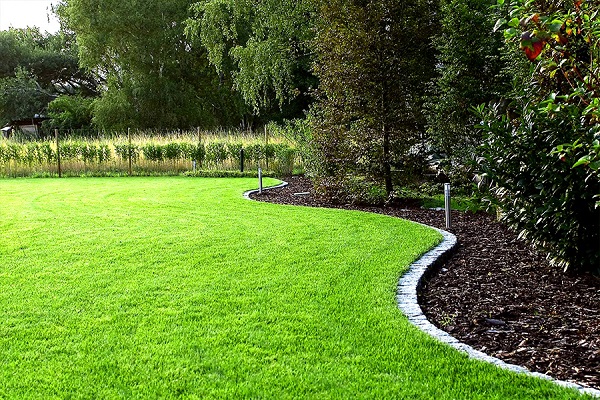
Security measures
Care must be taken when working with chemical compounds. Diammophos is no exception. Causes allergic reactions on contact with skin. Therefore, it is recommended to use protective equipment: gloves, bandages, raincoats (when spraying the active substance with a sprayer).

Storage rules
Since Diammophos is soluble in water, it should be kept in a dry, well-ventilated place. The optimum temperature is up to +30 ° C, direct sunlight is highly undesirable. The drug is non-toxic, does not ignite when heated and does not explode. Therefore, many gardeners leave it in the house for the winter.
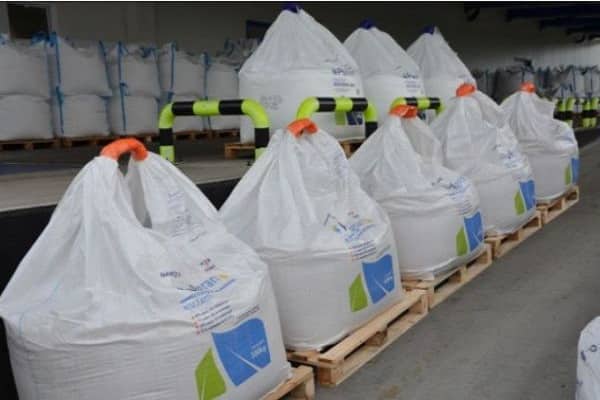
Recycling
After the expiration of the shelf life, it is better to dispose of Diammophos, since the drug loses its useful properties and becomes useless for application to the soil. It is forbidden to throw chemical compounds into a regular trash heap. It is better to take to special points for the disposal of such drugs.
Diammophos is considered a universal fertilizer, the use of which increases the productivity of garden crops, and has a positive effect on their taste. Top dressing is used in large agricultural complexes and on compact household plots. The drug quickly dissolves in moist soil, rapidly enters the plants. It is applied on any type of soil during the entire growing season.

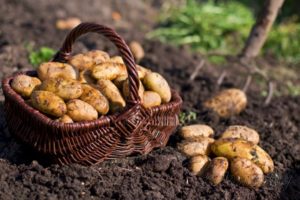
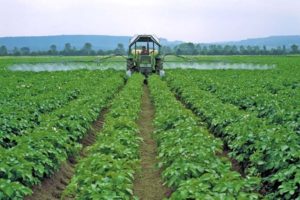

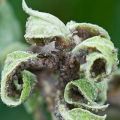


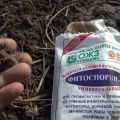

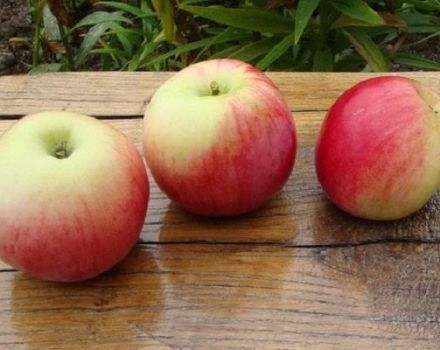

Before I was afraid to use this fertilizer, as I try not to use any “chemistry” in the garden. But then skepticism diminished, and it turned out that such fertilizers have a very good effect on productivity. In addition, I use a growth activator BioGrow, so for some crops (tomatoes, for example) the yield increased by 30 percent.